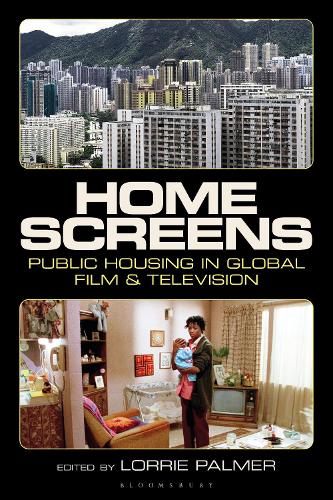
Home Screens: Public Housing in Global Film & Television
(Paperback)
Available Formats
Publishing Details
Home Screens: Public Housing in Global Film & Television
By (Author) Lorrie Palmer
Bloomsbury Publishing PLC
Bloomsbury Academic
26th June 2025
United Kingdom
Classifications
Professional and Scholarly
Non Fiction
Television
Housing and homelessness
History of architecture
791.43655
Physical Properties
Paperback
296
Width 152mm, Height 232mm, Spine 18mm
440g
Description
How do film and television makers around the world depict public housing Why is public housing so often chosen as the backdrop for drama, horror, social critique, rebellion, violence, artistic creativity, explorations of race relations and political intrigue Home Screens answers these questions by examining the ways in which socialized housing projects around the world are represented on screen. The volume brings together a diverse group of interdisciplinary scholars, who explore documentary and fictional portrayals of the architecture of public housing, and the communities that inhabit it, ranging from the 1950s to the present. Examining international film and media texts such as Die Architekten (1990), Swagger (2016), Cooley High (1975), Mee-Pok Man (1995), Treme (20102013), Mamma Roma (1962), The Pruitt-Igoe Myth (2011), and Below the Lion Rock (19721976), essays within this book consider public and private attitudes toward socialised housing, explaining how onscreen representations shape perceptions of these ubiquitous, often-stigmatized urban locations.
Reviews
This wide-ranging and very necessary volume grapples with what it means for public housing to become an image. Across twelve strikingly argued chapters, Palmer and her contributors show how film and television not only materially contribute to that image on a global scale, but how they can iterate, complicate, or question it and, in doing so, redefine our image of the home. -- Erica Stein, Vassar College, USA
Home Screens is a must read for anyone interested in government-financed housing in both material reality and cinematic space. Palmer and her contributors deftly examine how diverse tenants try to create a sense of home in its contained, often precarious spaces. -- Merrill Schleier, University of the Pacific, USA
Author Bio
Lorrie Palmer is Associate Professor of Film and Media Studies at Towson University, USA. She has published widely on film history, digital aesthetics, race, gender and technology in film and television, genre, and cinematic urban architecture.
